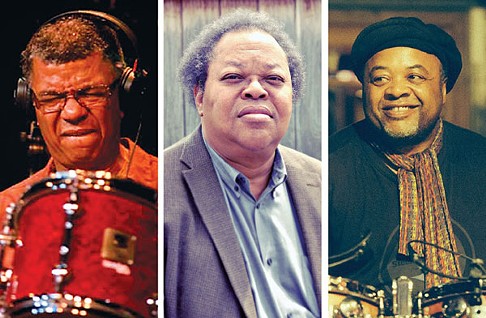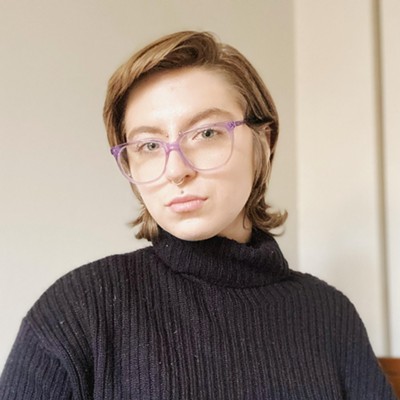It’s rare to have three high-ranking jazz musicians hit Pittsburgh independently during the same week. This triumvirate of music gets even more unusual because several of their performances overlap this weekend. All three of them maintain the foundation of jazz in their approach, but they head in vastly different directions, while also continuing to maintain communication with their fellow musicians and audience.
The Associated for the Advancement of Creative Musicians (AACM) came to life half a century ago in Chicago to encourage new directions in jazz, specifically in the realm of composition. Trombonist George Lewis was barely out of high school when he got involved with the organization. Since then, he has recorded numerous albums as a leader and sideman, but he has also become prominent as an academic scholar. Currently sitting as an Edward H. Case Professor of American Music at Columbia University, Lewis has been a pioneer in computer music and software that enables musicians to perform simultaneously with players in different cities.
As Lewis talks about improvisation, he expounds in ways that go beyond the idea of musicians simply playing together. “Over the years, I began to start hearing music in terms of, not emotional expression, but certain kinds of negotiations and position-taking and advocacy and desire,” he says. “You could tell how people would like the music to go, or what they felt about the current situation. … These [personal expressions] are being carried by sound.”

The idea for Lewis’ Voyager Interactive music software dates back to the late ’70s, when he discovered microcomputers that could interact with the environment and create music in a life-like manner. “There was a sense of agency. You could hear the computer[s] taking these positions, clearly responding to some input,” he recalls. “You could even tell when they were deliberately not paying attention. It was fascinating. I decided I wanted to do that.”
For Spooky Interaction, pianist Geri Allen (and director of Jazz Studies at Pitt) and Lewis will perform in Pittsburgh while flutist Nicole Mitchell, trombonist Michael Dessen and saxophonist Francis Wong make up the rest of the group in California. Two local ensembles will perform Lewis’ compositions on separate nights, at Pitt and The Andy Warhol Museum.
Drummer Jack DeJohnette left Chicago before the official inception of the AACM. But prior to his departure he went to college and played music with several of the key members, like pianist Muhal Richard Abrams and saxophonist Roscoe Mitchell, later of the Art Ensemble of Chicago. Since then he has achieved recognition for his own groups and with people like Miles Davis, Charles Lloyd and Keith Jarrett.
As a guest of honor at the 2013 Chicago Jazz Festival, DeJohnette chose to reunite his longtime friends for a summit performance. Along with Abrams and Mitchell, the quintet included saxophonist Henry Threadgill and bassist Larry Gray. “We just started where we left off,” says the NEA Jazz Master. “These are all legends, these guys. You don’t have to worry! I always try to surround myself with musicians that I can trust [and who are] qualified enough to interpret the music and also add their own personal vibration to the music.”
This Friday, his performance at the Manchester Craftsmen’s Guild goes in another direction. DeJohnette’s trio will be joined by tap dancer Savion Glover, whose skills make him “the Coltrane of tap,” according to the drummer. “Tap and drums are the same,” DeJohnette says to explain the teaming of him, Glover and second dancer Marshall Davis Jr. “They use the same rudiments. The sound is just different. But rhythmically, it’s two drummers playing together, rhythm with subtle movements of the body.”
Unlike the other two musicians, Jeff “Tain” Watts did not grow up in Chicago or have connections to the AACM. Instead, the drummer grew up in the Hill District, and later North Versailles, before attending Duquesne University. Originally a classical percussionist who studied tympani, he eventually decided to devote his time to the trap kit and headed to Boston’s Berklee School (now College) of Music.
It was there that he caught the attention of fellow student Branford Marsalis, who introduced him to his brother Wynton. They immediately hit it off, and Watts played on the trumpeter’s noteworthy ’80s albums like Black Codes (For the Underground). In a recent cover story on Watts in JazzTimes, Marsalis described his former bandmate as “an absolute, thorough, complete, once-in-an-epoch master of form. In the six years I played with him, I never heard him get off the form, ever.”
The article reveals that Watts has become a gale-force drummer in the tradition of players like Elvin Jones or DeJohnette, as well as a prolific composer. 2015’s Blue Vol. 1 and Blue Vol. 2 were his first new releases in four years, and they featured his longtime pianist and fellow Pittsburgh native David Budway, who returns with Watts this week.













